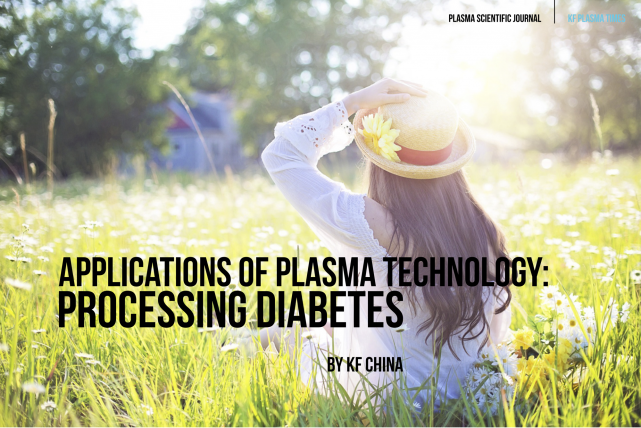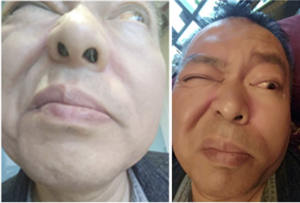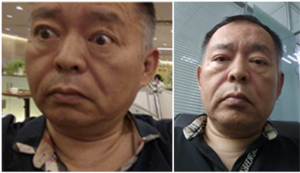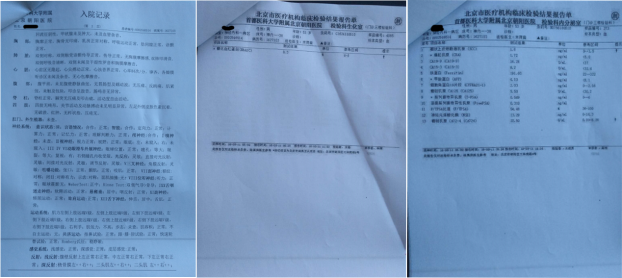Applications of Plasma Technology: Diabetes
This article is part of the KF Plasma Times October 2018
Applications of plasma technology: Diabetes
Keywords: diabetes, high blood pressure, diabetic eye, oculomotor nerve palsy, pancreas, diabetic foot.
Published: October 2018.
Introduction
Diabetes is a long-term condition which in the recent years became a global problem. According to the WHO (World Health Organization 2016), the number of people with diabetes has risen from 108 million in 1980 to 422 million in 2014 and hence the global prevalence of diabetes among adults over 18 years of age has risen from 4.7% in 1980 to 8.5% in 2014. In 2015, an estimated 1.6 million deaths were directly caused by diabetes. Another 2.2 million deaths were attributable to high blood glucose in 2012. Possible complications include heart attack, stroke, kidney failure, leg amputation, vision loss and nerve damage. In pregnancy, poorly controlled diabetes increases the risk of fetal death and other complications.
The primary function of pancreas is to regulate sugar levels in blood. Diabetic condition manifests when pancreas does not produce enough of the insulin hormone, or the body cannot use insulin properly. Applying GANS water externally and internally restores pancreas and what follows the entire body back to balance. Hence in case of the subject presented herein, the processing of diabetes involved drinking GANS water and spraying the affected eye and the pancreas area with CO2 GANS water.
Subject
This paper documents processing of a diabetes condition. This existing diabetes condition consequently led to the development of two other conditions, namely diabetic foot and oculomotor nerve palsy. The subject is a 53 years old male, diagnosed with hepatitis B and a history of 15 years of high blood pressure - up to 230 / 190mm Hg. After 15 years of diabetes mellitus, metformin was administered, with fasting blood glucose levels at 10 mmol, and postprandial glucose at 18 mmol. The father of the subject had a history of diabetic foot and had his limb amputated.
The subject was admitted to hospital in February 2018 for diabetic foot – pictures of the foot in Figure 1. He reported a slight improvement after receiving the treatment, but the problem remained. In April 2018, muscle and nerve problems in the eyeball were diagnosed by doctors as a result of diabetes. He visited several hospitals but without any improvements. Finally, in May 2018 ended up hospitalized for the oculomotor nerve palsy. In the early stages of the eye condition the subject was able to open his eye only in 1/3,
no matter how hard he tried and in the later stages it got fully closed. None of the hospital treatment he was subjected to helped in any way. Figure 2 depicts the condition of the eye before processing it with plasma.
Method
Processing of the diabetes involved drinking GANS water and spraying both, the area of the eye and pancreas with CO2 GANS water.
Usage
Oral administration of the GANS water involved drinking CH3, CO2 and ZnO GANS waters, one after another, with 3 minutes break in between at the following times and in the given amounts.
In the first week of processing:
- Morning: 30ml CH3, 30ml CO2, 30ml ZnO.
- Lunchtime: 30ml CH3, 30ml CO2, 30ml ZnO.
- Evening: 30ml CH3, 30ml CO2, 60ml ZnO.
Subsequent weeks:
- Morning: 30ml CH3, 30ml CO2.
- Lunchtime: 30ml CO2.
- Evening: 30ml CO2, 60ml ZnO.
Spraying of the eye and pancreas areas was done several times per day.
Observations
From the start of the process, there were signs of sugar decrease, especially after consumption of carbohydrates, where previously it took a few days for the sugar level to lower. Now within few hours after drinking GANS water, the blood sugar reaches to normal levels. But because of the frequent business trips, habits such as drinking and eating irregularly, and occasionally drinking alcohol, influenced the processing, therefore the monitored blood sugar and blood pressure values were affected.
Results
Since the beginning of the processing the subject stopped taking any diabetes medication. His blood sugar levels dropped down. At the time of writing this publication when the subject does not consume carbohydrates, his blood sugar levels are still slightly above the recommended norms for a person without diabetes but within the values recommended for diabetics. The fasting blood sugar level (measured just before dinner) is 5.6 mmol/L and two hours after meal is 9 mmol/L. On a diet including carbohydrates, these values go up to 8 and 14 mmol/L, respectively. The recommended sugar values are captured in the table below.
Over the six weeks period, the subject improved significantly but still needs to control the consumption of carbohydrates. He still drinks GANS waters, following the processing steps and further results will be reported on in the future.
Diabetic footThe 53 years old man reported that the diabetic foot had improved significantly during processing with plasma technology. The wound was almost completely recovered. Pictures in Figure 3 were taken 6 weeks after the beginning of the processing.
Oculomotor nerve palsy
Six weeks since the beginning of the processing the subject was also able to open, for the first time, his affected eye again. Below, in the Figure 4, is a picture of the him trying to open his eyes after 6 weeks of processing (left). Although the subject could open his eye, since the right eye was not used for a long time, the optical nerves degenerated, and he was still accustomed to the situation of the eye closed. A week later, he received the processing protocol with GANS patches to restore the optical nerves in the head and eyes. Within 5 minutes, the visual clarity of the subject's response increased from 70% to 95%. Next (right) is a picture taken at the end of the processing.
References
- World Health Organization. 2016. Global report on diabetes. World Health Organization.
- Diabetes self-management. 2018. Blood sugar chart. https://www.diabetesselfmanagement.com/managing-diabetes/blood-glucose-management/blood-sugar-chart/
Supplementary Materials
Hospital records Discharge report Blood sugar and blood pressure tracking charts











